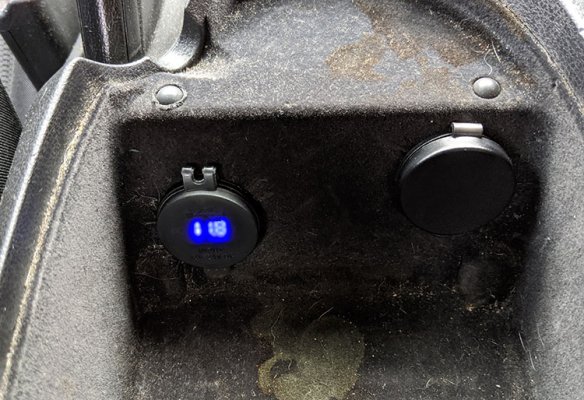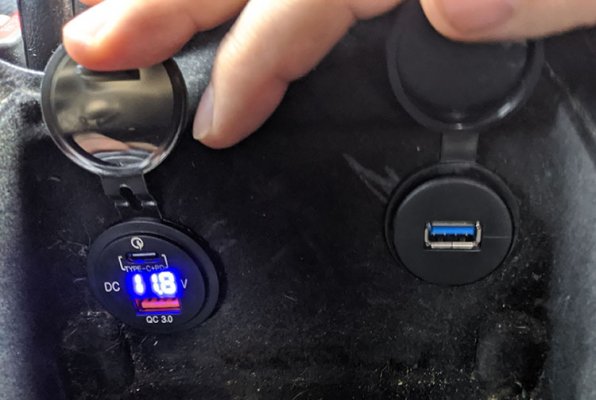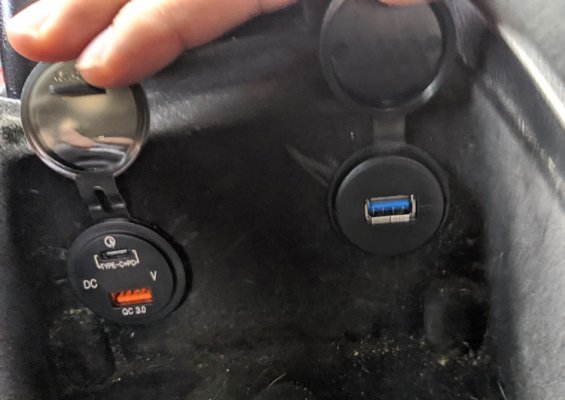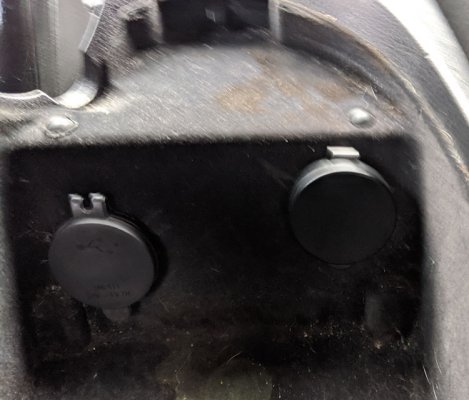sixshooter_45
2019 Ruby Red Metallic SC, 3.5 L Twin Turbos.
Picture shows it comes with its own cover
I know, but wondered if that couldn't be removed as the stock OEM cover looks better.

Disclaimer: Links on this page pointing to Amazon, eBay and other sites may include affiliate code. If you click them and make a purchase, we may earn a small commission.
Picture shows it comes with its own cover

I know, but wondered if that couldn't be removed as the stock OEM cover looks better.
Most newer phones, tablets, laptops, everything electronic charges with USB-C. I would bet money the next iPhone or the one after that uses it too since iPads and MacBooks use it now. First reason is convenience; smaller connector and plugs in either direction. Second reason is, generally speaking, USB-C can provide more power than USB-A.Sorry for being a dummy but what is the point of having a type c port in the truck for?
It was easy, once you get the console apart. You might have missed this, but I did this on my 370z, not my Raptor. I did have to dremel the hole out a little bit as it was keyed to ensure the OEM 12V socket was oriented perfectly. I'm not sure I'd be able to return to stock, but I never would and F the next owner; there is a second 12V socket for any accessories I might need. I think the cover that came with it looks fine and don't think the OEM would work.I like that. Ez install? Did u have to remove cover to close OEM cover? I never have OEM cover closed anyway. Mine actually stopped working recently. Annoying.




That's inside of your center console! Who cares how it looks like there?
Anything can be removed, adjusted or custom made, but it is worth the effort? That's your call.
Are you talking about usb 3.0? My phone uses usb type c which I use a simple cable to covert (no adapters) but even then I use wireless charging cause I've ruined multiple ports over the years of owning multiple phones due to the amount of connecting and reconnectsMost newer phones, tablets, laptops, everything electronic charges with USB-C. I would bet money the next iPhone or the one after that uses it too since iPads and MacBooks use it now. First reason is convenience; smaller connector and plugs in either direction. Second reason is, generally speaking, USB-C can provide more power than USB-A.
It was easy, once you get the console apart. You might have missed this, but I did this on my 370z, not my Raptor. I did have to dremel the hole out a little bit as it was keyed to ensure the OEM 12V socket was oriented perfectly. I'm not sure I'd be able to return to stock, but I never would and F the next owner; there is a second 12V socket for any accessories I might need. I think the cover that came with it looks fine and don't think the OEM would work.
I just got the car in March and I installed a wireless charger just under the center console that charges my phone, so I haven't even actually used the USB ports. I took a couple pics if you want to see what they look like open, closed, on, and off. Never mind the stains and mess in the console; previous owner left the car a mess and I haven't had it long enough to work on detailing yet. The other USB port is connected directly to the back of the head-unit, which isn't high power, so it isn't good for charging; just there for Android Auto, Car Play, firmware updates, etc.
@ljn21 Sorry for the hijack. Wasn't my intention.
This is way more technical than I thought anyone on here would care about, but your question is why I said, "generally speaking" above. Technically speaking, the connector (USB-C, USB-A, micro-USB, etc.) has nothing to do with how much power the port can provide. Power directly corresponds to how fast your device can charge; more power = more fast. USB-C however is generally tightly coupled with both USB 3.1, which increases the power capability over 2.0, and more importantly USB-PD (power delivery). USB versions (2, 3, 3.1, etc.) focus on data transfer rates where PD is specifically dealing with power delivery.
USB-PD is a set of standards that function very similar to Qualcomm's QuickCharge (QC), but it is built as a USB standard instead of a technology that must be licensed from Qualcomm. Essentially, if both sides support the technology, the initial connection is made using the USB standard low amp 5V, but both ends negotiate supported voltages and the charger can step the voltage up while keeping the current the same (generally 3amp), giving you more power and faster charge times. I supposed you could implement USB-PD with a USB-A connector, but I've never seen it. That is why the new MacBooks and many other laptops use USB-C chargers; it is convenient and previous USB implementation couldn't provide the power required.
So in my case, the important part is actually the "PD" part of the USB-C port. I had a phone that supported QC a few years ago, but I think that technology is dying as PD becomes more universal. You can see the USB-A port under the C port support QC. The other USB port is blue, indicating 3.0 or 3.1, but it is connected directly to the head unit so it most likely does not actually support more than 2.0. It is just dumb to buy less than 3.0 in anything in 2020.
Unrelated side note, the USB-PD standard also includes "reverse charging". Which would allow you to use your phone (or any USB-C device that implements it) as a portable battery to charge other devices. Think about charging your blutooth headphones from your phone while on the go or your wife's iPhone, which is perpetually dead (too close to home), as examples. One day you may be able to jump your car from your phone over the USB port.

